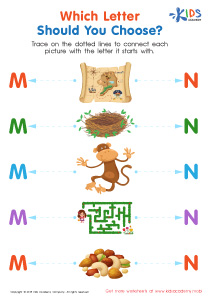Handwriting practice Normal Lowercase/Small Letters Worksheets for 5-Year-Olds
8 filtered results
-
From - To
Boost your 5-year-old's handwriting skills with our expertly crafted Handwriting Practice Normal Lowercase/Small Letters Worksheets! These vibrant, fun-filled worksheets are designed to make learning enjoyable and effective. Each sheet provides clear guides to help young learners accurately trace, write, and recognize lowercase letters. With engaging activities and adorable themes, children will build confidence and fine motor skills essential for writing. Perfect for at-home practice or classroom use, these worksheets set a strong foundation for future writing success. Visit our website now to download and watch your child's writing abilities soar!
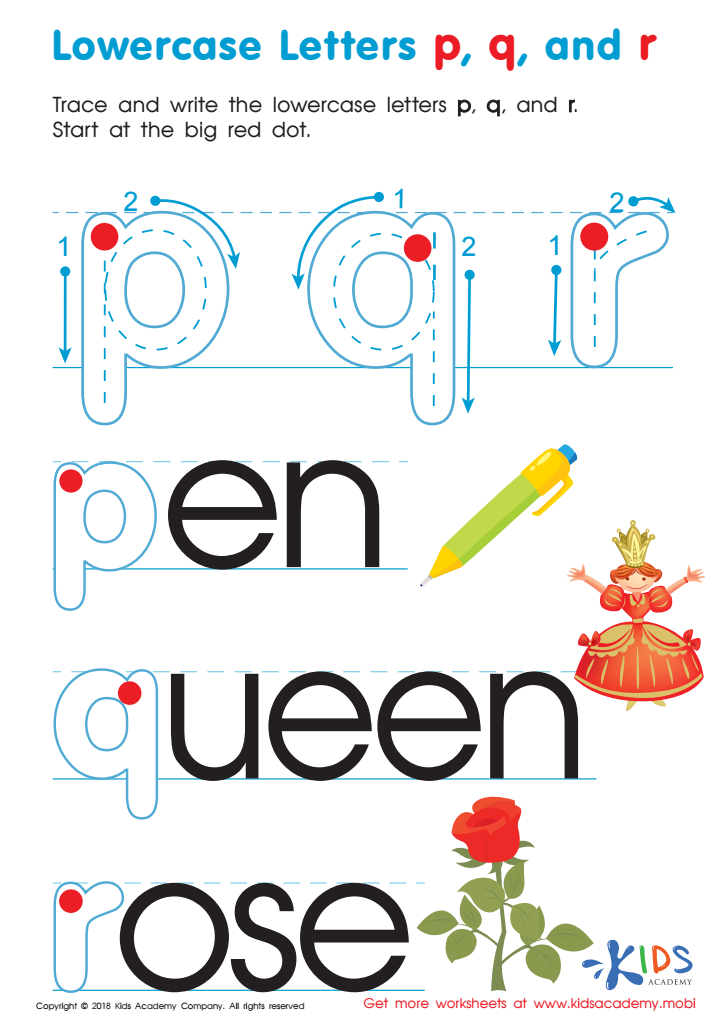

Lowercase Letters p q r Worksheet
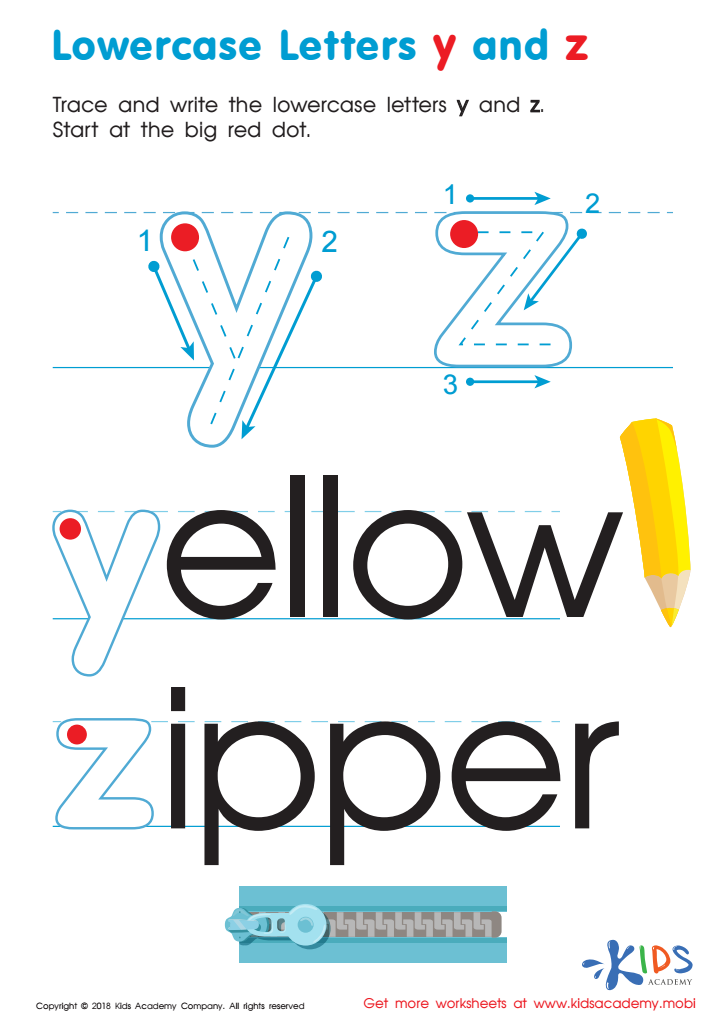

Lowercase Letters y z Worksheet
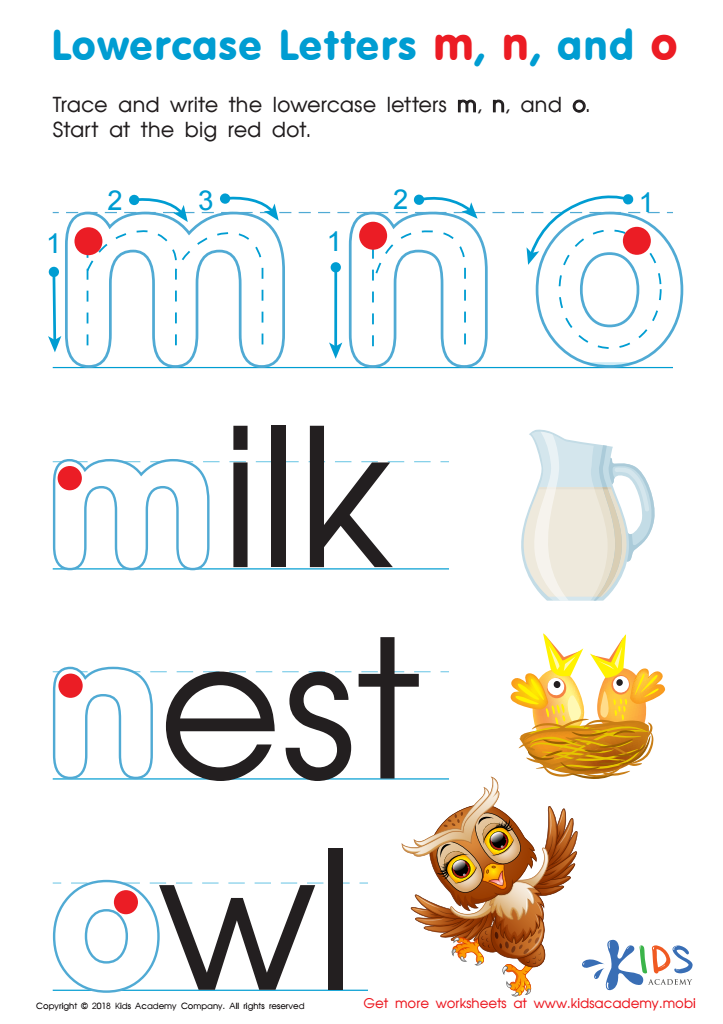

Lowercase Letters m n o Worksheet
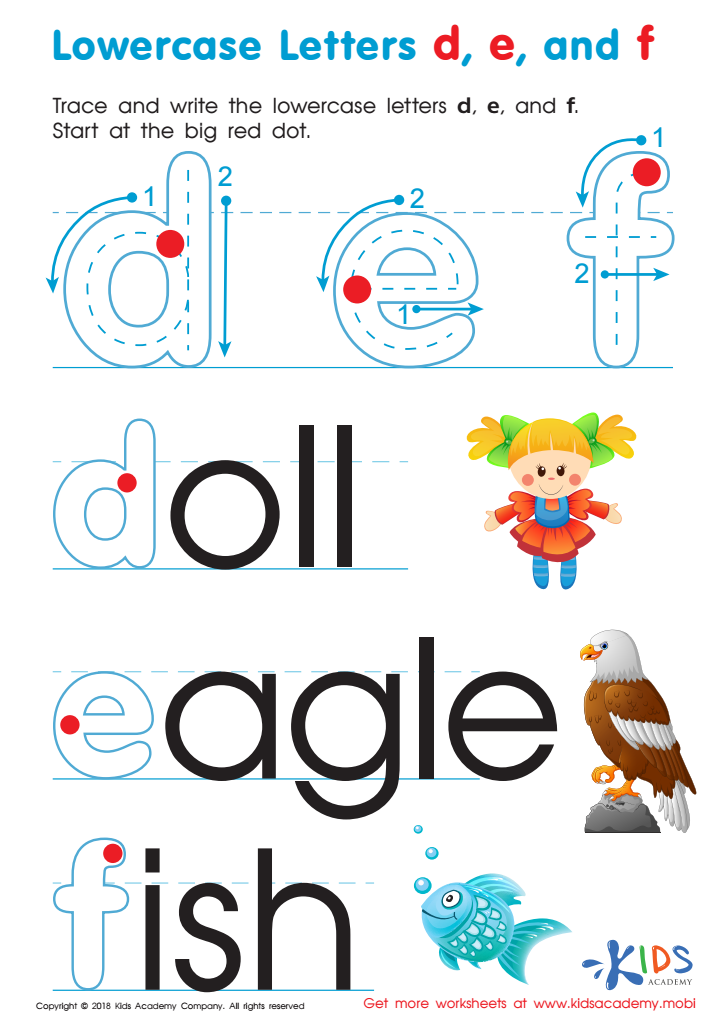

Lowercase Letters d e f Worksheet
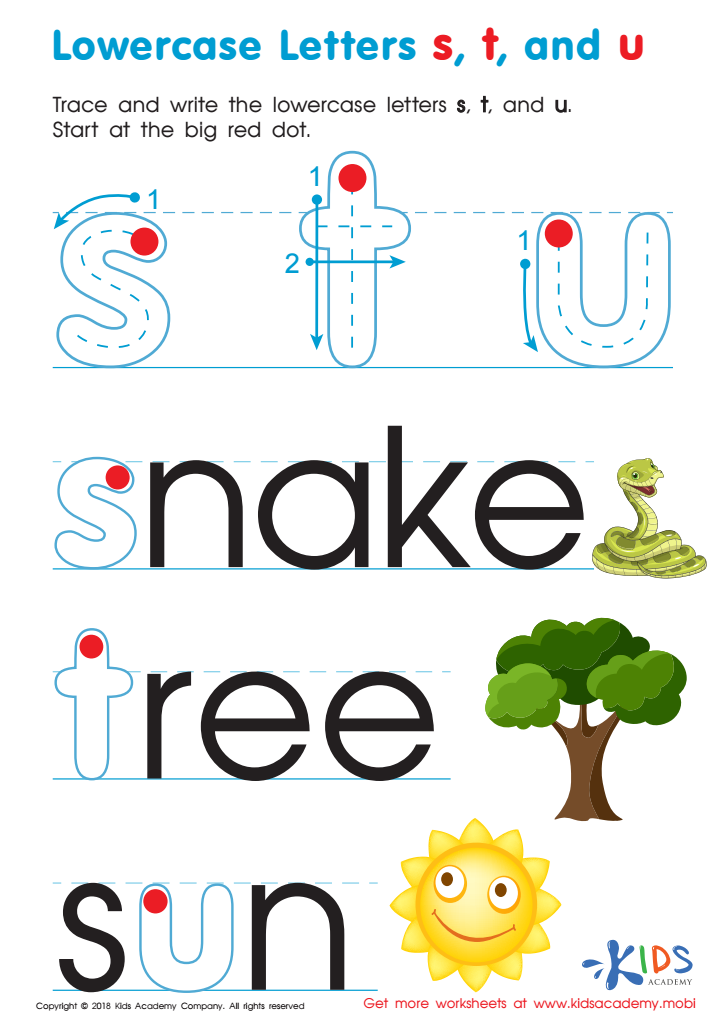

Lowercase Letters s t u Worksheet
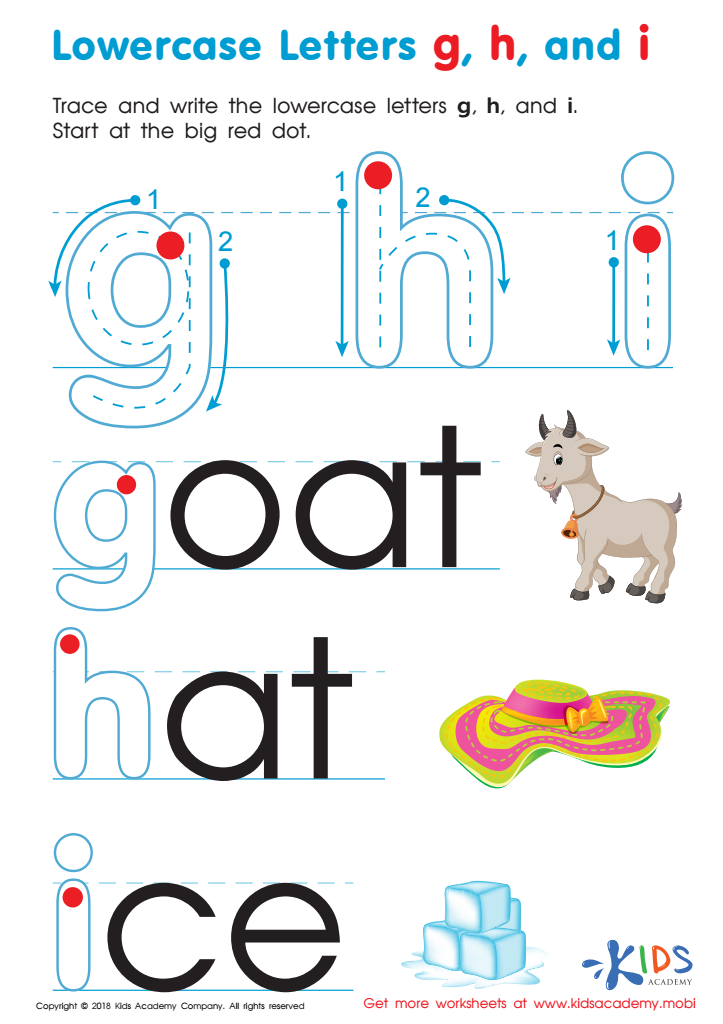

Lowercase Letters g h i Worksheet
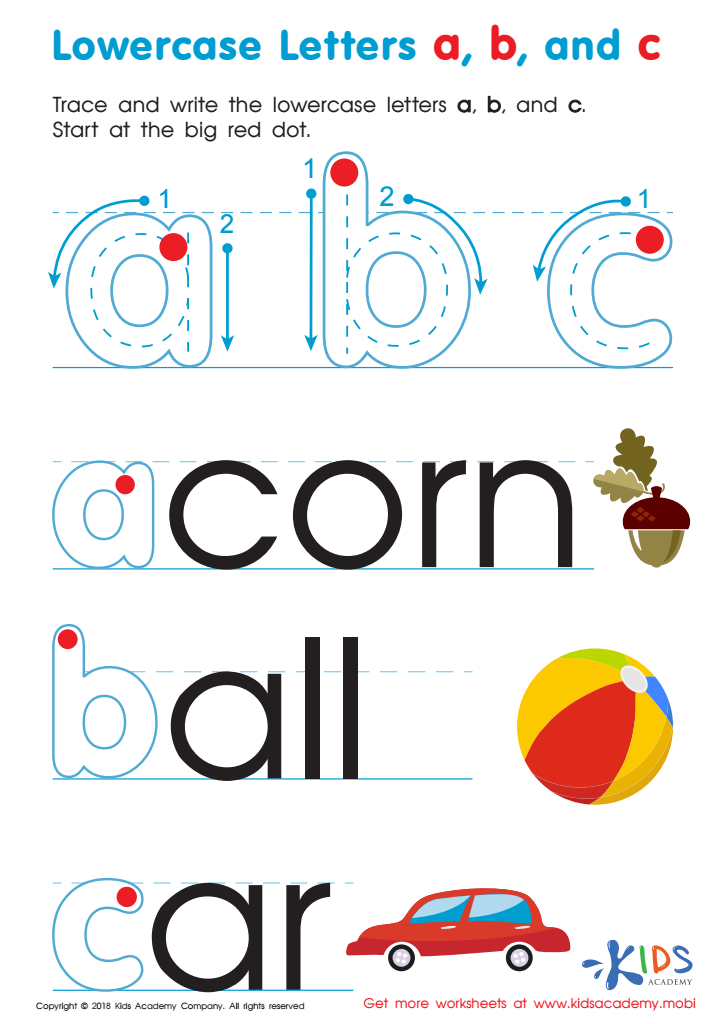

Lowercase Letters a b c Worksheet
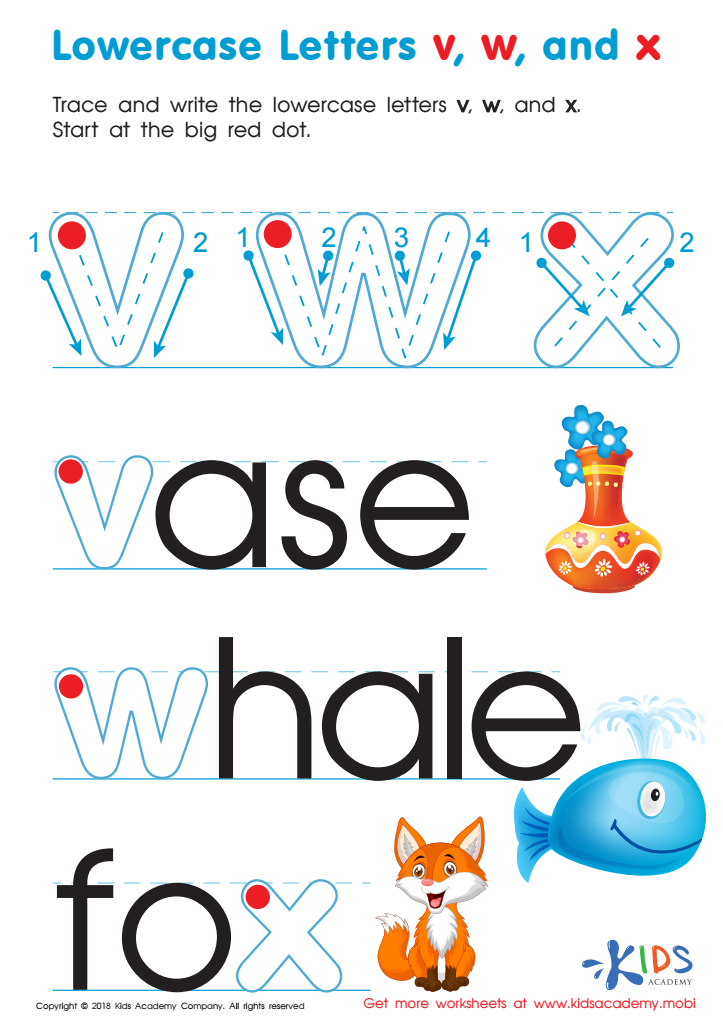

Lowercase Letters v w x Worksheet
Fostering good handwriting practice with normal lowercase/small letters is essential for 5-year-olds' developmental and academic progress. Firstly, fine motor skills and hand-eye coordination improve significantly through handwriting activities, laying a strong foundation for future academic tasks involving manual dexterity. Early engagement in writing also helps children master the basics of written communication, crucial as they start their formal education.
Handwriting practice enhances cognitive development, as it involves memorizing shapes and letter patterns, thereby boosting memory and concentration. When children type on keyboards, they bypass the tactile learning that handwriting provides. Writing lowercase letters is particularly beneficial, as these are more prevalent in reading materials and everyday writing, equipping children to read and write more fluently.
Additionally, clear and legible handwriting fosters self-confidence. When children can write neatly, they feel a sense of accomplishment, motivating them to engage more in learning activities. Practicing handwriting also offers a valuable break from screen-time, promoting better posture and visual health.
Teachers and parents should actively encourage handwriting practice to help children develop essential academic skills, cognitive abilities, and personal confidence, better preparing them for future challenges. Practical, fun activities like tracing, drawing, or interactive writing games can make learning this skill enjoyable and effective.
 Assign to My Students
Assign to My Students




